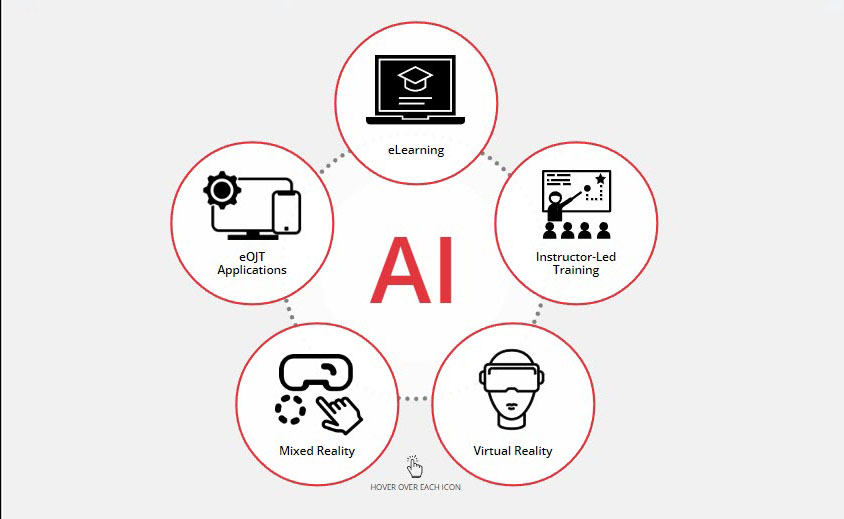Right Tool for the Right Job: Reimagining Training in the Digital Age

Embracing the Evolution of Learning Tools
In a world where technological advancements are relentless, training professionals must adapt and evolve. The classic tools like eLearning and Instructor-Led Training (ILT) have been the bedrock of corporate learning, but the horizon is expanding with groundbreaking tools like Virtual Reality (VR), Mixed Reality (MR), and Artificial Intelligence (AI). It’s time to ask ourselves:
Are we using the right tool for the right job, or are we missing out on something crucial?
Understanding the Classics and Beyond
Instructor-Led Training (ILT) has been the traditional approach, valued for its real-time interaction and personalized skills learning. However, it struggles with logistical challenges, often requiring travel and time away from the job and a uniform delivery of content across different instructors.
eLearning revolutionized self-paced learning, offering flexibility and cost-effectiveness. Yet, it lacks the personal assessment and coaching of ILT. eLearning can make you smarter but not necessarily competent on the job, especially if skills transfer is required.
Video Learning emerged as an engaging medium, combining auditory and visual elements. However, passive consumption can hinder retention without interactive elements.
The New Frontier: VR, MR, and AI
Virtual Reality (VR) has opened new dimensions in training. VR’s immersive environments are ideal for high-risk training scenarios and discovery learning where a simulation can enable the learner to see inside the machine or safely practice a dangerous procedure.
Mixed Reality (MR) blends the virtual and real worlds, enhancing hands-on skills training. Learners can work “head up – tools in hand” guided step by step through a procedure without instructor time investment. Or receive live expert “see what I see” support without the need for travel.
Artificial Intelligence (AI) integrates with any of these technologies to further enrich the learning experience with natural language interaction and personalized on the job support. It can also evaluate and coach performance. AI can also decrease the cost and time for course development. In its finest form, it can injest all existing knowledge and procedures for a process and serve as an on the job AI Copilot answering questions or guiding a worker through a procedure step by step.
The Right Tool for the Job
Every learning tool has its strengths and weaknesses. The key is to match the tool with the learning objectives, content nature, audience, and available resources. A blended approach often yields the best results, leveraging the strengths of various methods. Success requires a complete set of tools in our training toolbox.
Embracing Change
As training professionals, it’s crucial to stay updated with these advancements. Incorporating VR, MR, and AI into our toolbox is not just about keeping up with trends; it’s about ensuring the most effective and efficient learning experiences. It’s time to take a fresh look at our training toolbox and ask ourselves if we’re truly using the right tool for the right job.
Recommended Reading
To deepen your understanding, consider exploring resources like “Telling Ain’t Training” by Harold D. Stolovitch and Erica J. Keeps, and “Learning in 3D” by Karl M. Kapp and Tony O’Driscoll, which delve into the nuances of modern learning tools and techniques.
Authored by Thomas Pratt, President of CraneMorley, with insights from his trusty AI Co-Pilots. Reach out at [email protected] or 562-427-7000 for more insights into the future of learning and development.








